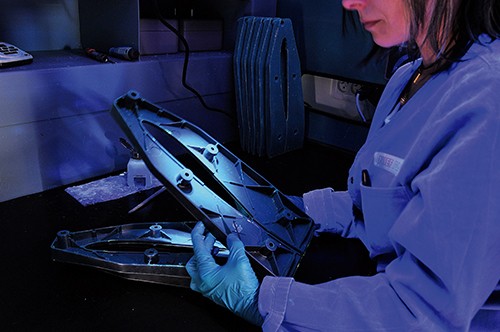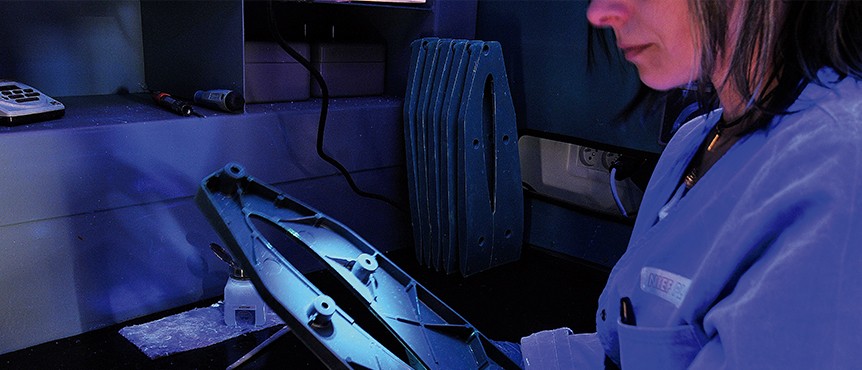The French government offers a generous tax credit scheme to encourage R&D.


France’s continuing strength as a hub for innovation is encouraged by the French government’s generous Research Tax Credit Scheme, which covers 30% of all R&D expenses up to €100 million, and 5% of expenses over €100 million. The scheme is available for companies of all sizes operating in France, across all sectors, and aerospace companies within the Auvergne-Rhône-Alpes region are taking particular advantage of the scheme to fund their research.
Karim Chibane, director at research and educational institute Esisar Grenoble INP, explained how the Research Tax Credit Scheme has enabled stronger links between his institute and aerospace companies within the region: “While participating companies benefit from the program by having access to our research resources and talent, they also receive significant financial benefits from partnering with us as a result of government incentives such as the research tax credit system, which awards tax discounts to companies that collaborate with academic structures for research.”
The aerospace sector of the region is investing heavily in research spending supported by the Research Tax Credit Scheme. “Last year, our industry research projects brought in revenue of €15.4 million, with 25% coming from the aeronautics sector,” said Manuel Collet and Régis Dufour, directors at research cluster Ingenière @ Lyon, which is home to over 1,800 researchers and conducts partnership research for companies in the region.
Companies at all levels of the value chain are not only benefiting from this funding individually, but also finding that it enables greater collaboration between leading companies and SMEs. Christian Bardot, VP at Thales Helicopter Avionics, said: “We take advantage of the Research Tax Credit Scheme, and work with SMEs and institutions to access funds in France and Europe which alone may be a challenge for them to obtain. In Valence, we are taking advantage of the technological advancements to co-design with the agile SMEs of the region.”
SMEs in particular have found the scheme profitable and far easier to access than other sources of funding, as explained by David Perret, general manager at Eldec: “We have benefited hugely from the French Research Tax Credit Scheme; it grants us a tax discount of around half a million euros a year, and we have between three and five students working with us at a time. We have found it difficult to access European funding schemes as it is necessary to be in partnership with leading companies and research bodies to apply.”
A workforce for the future
Beyond making intensive research accessible to SMEs that would otherwise find it cost-prohibitive, the Research Tax Credit Scheme also supports the education and training of the skilled workforce the region so desperately requires. Companies across the region report a struggle to attract and retain sufficiently qualified staff in high enough numbers, with SMEs facing particular challenges. “Big companies will always be attractive to graduates, but it is very difficult for SMEs to recruit sufficiently qualified engineers today because the entire European market needs around twice as many engineers than we currently have,” explained Chibane.
The Auvergne-Rhône-Alpes region faces a further particular challenge in terms of the relatively rural and remote locations of many of its hubs. Patrick Besnier, president at DBC, explained: “Finding enough qualified staff is a major issue for us. We are striving every day to find people to work with us and, although we are offering very high salaries, it is a struggle. The industry is not attractive enough for young people, and particularly the industrial locations that many aerospace businesses are based in are unattractive to young people who prefer to be based in cities.”
With many companies in the region reporting a desire to take on more staff in the coming years as they expand their operations in the region, the pressure is on to create a workforce to meet this demand. Chibane is confident that his institution, which runs work experience and industry placement schemes with its partner institutions, is ensuring not only that its students develop the necessary skills to meet industry needs, but also that they are prepared to take on jobs specifically within the region. “Our partner companies also benefit in the longer term because in building relationships with young engineering talent, they are ensuring that they will not be affected by the shortage of qualified talent that so many other companies are facing,” he explained.

France’s continuing strength as a hub for innovation is encouraged by the French government’s generous Research Tax Credit Scheme, which covers 30% of all R&D expenses up to €100 million, and 5% of expenses over €100 million. The scheme is available for companies of all sizes operating in France, across all sectors, and aerospace companies within the Auvergne-Rhône-Alpes region are taking particular advantage of the scheme to fund their research.
Karim Chibane, director at research and educational institute Esisar Grenoble INP, explained how the Research Tax Credit Scheme has enabled stronger links between his institute and aerospace companies within the region: “While participating companies benefit from the program by having access to our research resources and talent, they also receive significant financial benefits from partnering with us as a result of government incentives such as the research tax credit system, which awards tax discounts to companies that collaborate with academic structures for research.”
The aerospace sector of the region is investing heavily in research spending supported by the Research Tax Credit Scheme. “Last year, our industry research projects brought in revenue of €15.4 million, with 25% coming from the aeronautics sector,” said Manuel Collet and Régis Dufour, directors at research cluster Ingenière @ Lyon, which is home to over 1,800 researchers and conducts partnership research for companies in the region.
Companies at all levels of the value chain are not only benefiting from this funding individually, but also finding that it enables greater collaboration between leading companies and SMEs. Christian Bardot, VP at Thales Helicopter Avionics, said: “We take advantage of the Research Tax Credit Scheme, and work with SMEs and institutions to access funds in France and Europe which alone may be a challenge for them to obtain. In Valence, we are taking advantage of the technological advancements to co-design with the agile SMEs of the region.”
SMEs in particular have found the scheme profitable and far easier to access than other sources of funding, as explained by David Perret, general manager at Eldec: “We have benefited hugely from the French Research Tax Credit Scheme; it grants us a tax discount of around half a million euros a year, and we have between three and five students working with us at a time. We have found it difficult to access European funding schemes as it is necessary to be in partnership with leading companies and research bodies to apply.”
A workforce for the future
Beyond making intensive research accessible to SMEs that would otherwise find it cost-prohibitive, the Research Tax Credit Scheme also supports the education and training of the skilled workforce the region so desperately requires. Companies across the region report a struggle to attract and retain sufficiently qualified staff in high enough numbers, with SMEs facing particular challenges. “Big companies will always be attractive to graduates, but it is very difficult for SMEs to recruit sufficiently qualified engineers today because the entire European market needs around twice as many engineers than we currently have,” explained Chibane.
The Auvergne-Rhône-Alpes region faces a further particular challenge in terms of the relatively rural and remote locations of many of its hubs. Patrick Besnier, president at DBC, explained: “Finding enough qualified staff is a major issue for us. We are striving every day to find people to work with us and, although we are offering very high salaries, it is a struggle. The industry is not attractive enough for young people, and particularly the industrial locations that many aerospace businesses are based in are unattractive to young people who prefer to be based in cities.”
With many companies in the region reporting a desire to take on more staff in the coming years as they expand their operations in the region, the pressure is on to create a workforce to meet this demand. Chibane is confident that his institution, which runs work experience and industry placement schemes with its partner institutions, is ensuring not only that its students develop the necessary skills to meet industry needs, but also that they are prepared to take on jobs specifically within the region. “Our partner companies also benefit in the longer term because in building relationships with young engineering talent, they are ensuring that they will not be affected by the shortage of qualified talent that so many other companies are facing,” he explained.